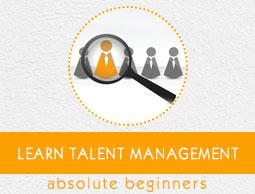Talent Management - Employee Engagement
Keeping employees engaged is one of the biggest challenges faced by organizations nowadays. It is also a huge opportunity to gain long-term commitment and mandatory effort from a team. This effort will ultimately lead to higher sales and fewer mistakes in an organization.
From the day an employee joins an organization, his or her positive engagement or fruitful involvement in organizational work becomes a tough responsibility of the management. Before allotting duties and responsibilities to newly appointed employees, the organization clarifies itself about its goals and places the employee at the right place to materialize the goals. It decides and understands what and how of the goals.
Hence, it is an important HR function to define and plan an employee engagement strategy that aligns with the organization’s goals.
What is Employee Engagement?
Employee engagement or keeping employees engaged refers to the manner in which employees give their best of individual and group effort in the interest of the organization. The approach of employee engagement keeps employees committed towards organizational goals and values. It keeps them motivated to give their best contribution to the success of the organization.
The integral parts of a business are organization, employees, leadership, and customers. A healthy and progressive cohesion and interaction among these parts is a necessary precondition for achieving organizational goals. It is based upon the notion of ‘One for All’ and ‘All for One’. There is interaction and interdependence among these parts.
Organization comprises of employees; employees provide effective leadership which leads to increased productivity and efficiency, as well as effective customer satisfaction. This, in turn, leads to growth and development of the organization.
Categories of Employee Engagement
Every business or organization inextricably wants to have higher retention rate, productivity, and reduced absenteeism. Hence, it seeks continuous employee engagement. Employee engagement can be broadly divided into four categories −
Actively Engaged − Employees belonging to this category are highly motivated and work with great passion, and feel a profound connection to their organization. They are used to work towards the vision of the organization, and contribute their ideas towards innovation and creativity for the success of the organization. They are passionate, innovative, and constructive in their work to the organization. They perform consistently at high level.
Actively Disengaged − Employees belonging to this category aren’t just unhappy at work; they are also busy exhibiting their unhappiness. They disperse negative energy into the organization, causing severe damage to the organization. However, they are likely to serve the organization for a longer time but will always try to undermine what their engaged coworkers accomplish.
Not Engaged − A considerable percentage of employees in an organization belong to this category. They lack passion and drive and are seldom concerned for the betterment of the organization. They are used to focus on the task rather than goal or vision of the company. They do the work what is told or according to the instruction. They won’t contribute ideas, creativity, or innovation. They might be positive or negative. They are not proactive.


